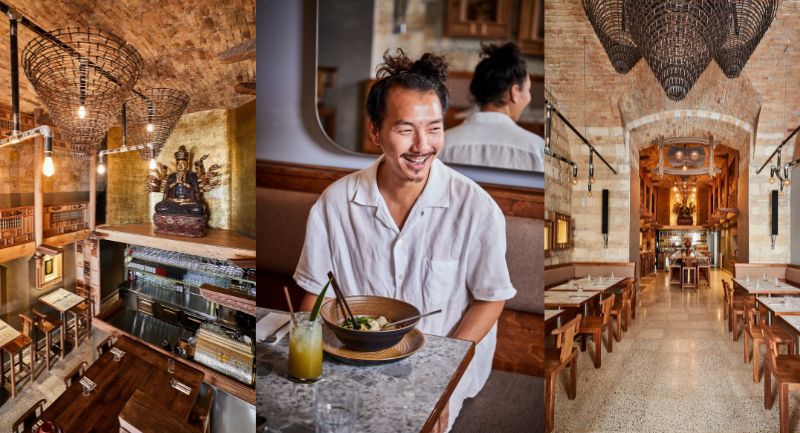
Best of Budapest & Hungary
Measure of Quality
Vietnamese Culture - Preservation in the Style of QUÍ
Anh Tuan is a designer and fashion designer of Vietnamese descent. His name is familiar to many due to his latter activities, and some are lucky enough to have a piece of clothing or a bag from the era when he dreamed big over design tables in their wardrobes. He was already present at the dawn of Budapest's gastronomic awakening, representing his Vietnamese roots, which can be experienced in the Budapest restaurants he founded with his partners. There is no lack of exotic flavors and professionalism, and the design faithfully reflects Anh Tuan's simultaneously traditional yet trend-setting style, in which recycling and the representation of materials and objects with a past play a key role.
Defining Memories from Hanoi
The guest space of QUÍ is almost tubular, with remarkable ceiling height, giving it a unique appeal. According to Tuan, after touring the premises, the vision of the interior came together in his mind on the same day. Intuitions and a defining childhood experience guided him. He was born in Hanoi's most beautiful, particularly romantic district, and their house was situated by a lake, surrounded by parks. He often visited a nearby, enchanting monastery with his grandmother, where he constantly looked upwards because statues reaching the roof directed young Tuan's gaze. This memory is crucial in the design of QUÍ.
Key: Recycling
Of course, alongside the experience and spiritual charge, functionality guided the design, with aesthetics following afterward. How can one create the desired restaurant with experience-centered interior design? Above all, by thinking in terms of recycling and environmentally friendly solutions. A striking example is the flooring, which they stumbled upon by chance and restored to its original patina through sanding and polishing. The tiles come from two different masters, with various mixtures, textures, and shades, including stones that are no longer quarried.
The restaurant's impressive wooden materials mostly come from demolished buildings. Tuan believes that old wood, especially tropical wood, is of much better quality because it deforms less and has had time to dry out and reach its final state. In the past, naturally harvested trees were cut down, which also adds to the quality and story. He inherently believes that materials and objects containing the passage of time are endowed with added value.
The Aesthetics of the Wooden Structure
There is something truly special about the entire space, to which not only the central 18-armed gilded Avalokitesvara Bodhisattva statue contributes but also elements of traditional Vietnamese architecture. The open-sided wooden column structure and the ornate carvings are just such elements. They open up the entire restaurant, making it appear as if a circular corridor rises above the guest area.
Interestingly, this "cloister" is located on the upper level, serving merely a decorative function, making the restaurant feel more homely. Traditionally, this would be on the ground floor, which adds a twist, making it modern and forward-thinking. This is a game that Tuan particularly enjoys: despite the materials having a past, the technique, approach, and design are entirely novel. This is how the visual and conceptual balance is achieved. In the details, certain small aspects of French colonial architecture can also be discovered in QUÍ.
Community Table and Space-Enhancing Mirrors
In the first section of the restaurant, a gigantic mirror creates an optical illusion, while opposite it, numerous ceramics are displayed in special, more modern display boxes. These are sometimes 300–500-year-old tobacco and hookah accessories with fantastic colors, glazes, and shapes, meant to bring culture into the space. Tuan has been collecting artifacts for 30 years, so it is no surprise that QUÍ is full of them. As an obsessive collector, he can tell at least one story about each piece.
The interior section of the restaurant, which evokes the mentioned pagodas, is more dynamic, featuring a huge communal table that runs along its length. This table is often adorned with eye-catching plants, as is customary in Tuan's other restaurants. Tuan and his team feel at home in a jungle-like milieu, which necessitates palm leaves and lushly arranged cut flowers. The eye rests on the contrast created by the brick, fine wood, and green plants. Even more so when exotic dishes are served on unique plates!




